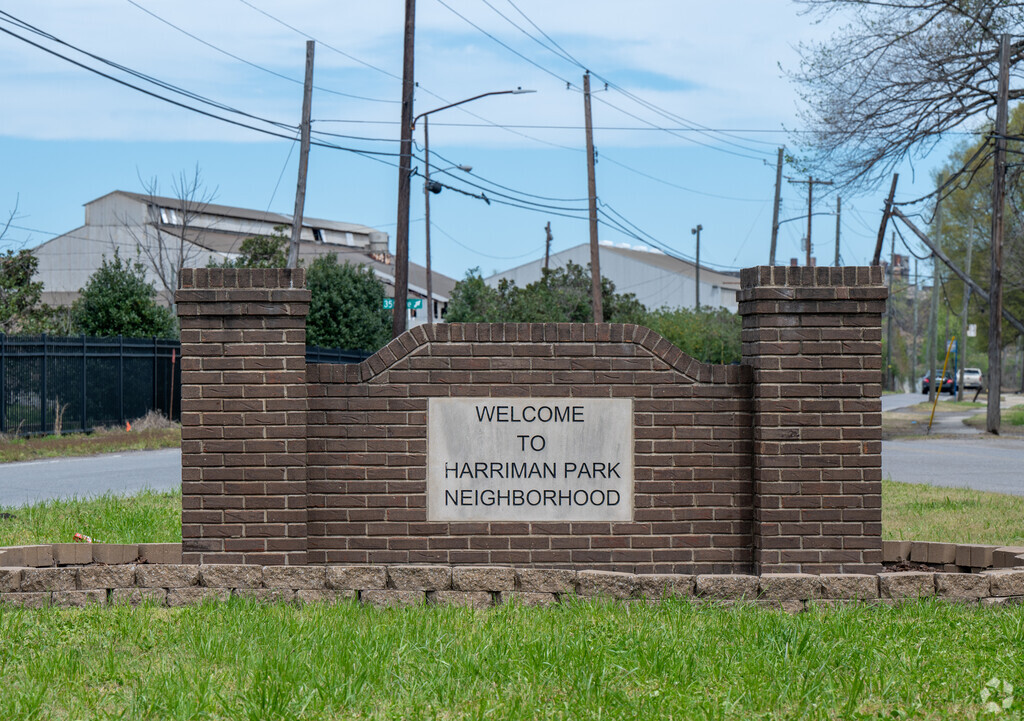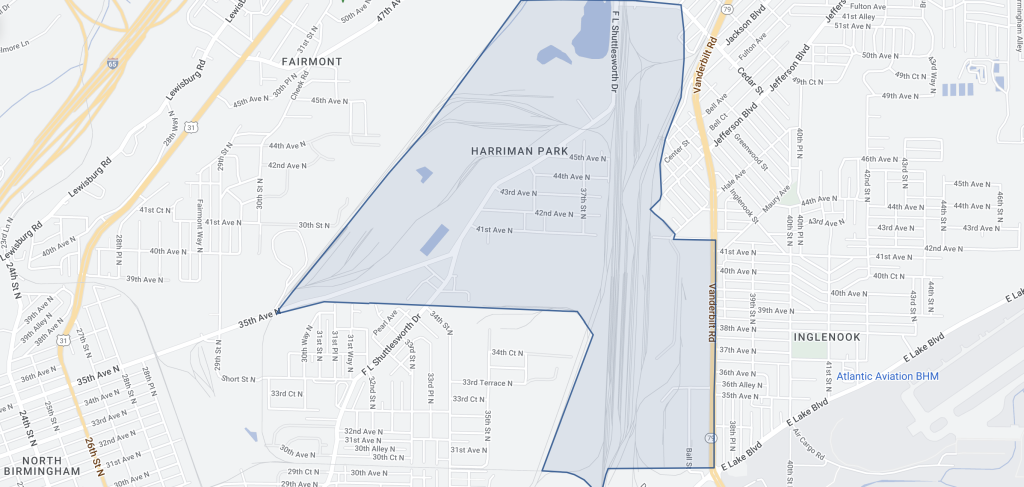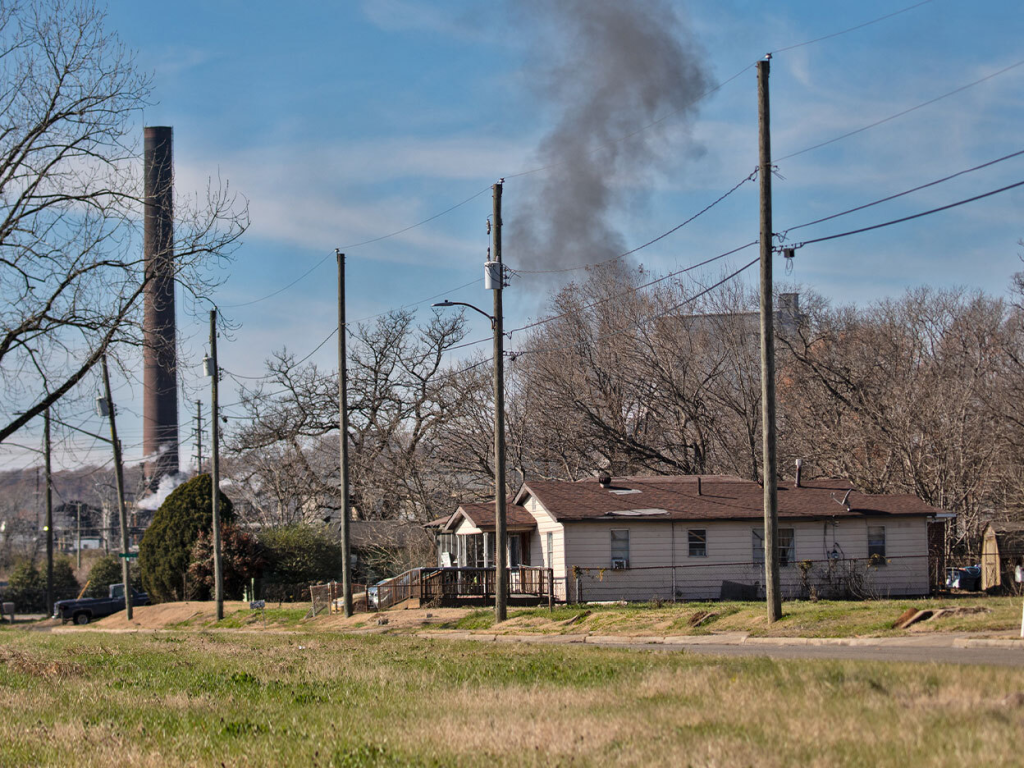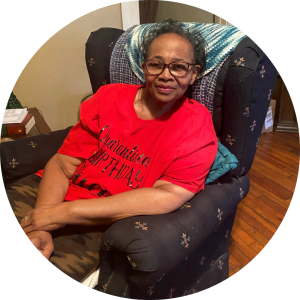Linda Carr’s upbringing in Harriman Park offers a poignant reflection of the complex intersection between industrial development and environmental justice. As Carr navigated her childhood in this community, she bore witness to the stark consequences of industrial pollution, manifested in the haunting sight of soot descending from the sky like black snow.
“We had to start using umbrellas,” Said Carr, “And you could hear it hitting the umbrella.”
Linda Carr lived in the Harriman Park neighborhood long enough to see the street she grew up on transform from Huntsville Row into Shuttlesworth Drive in 1988. The street was renamed to honor Rev. Fred Shuttlesworth, a prominent leader during the Civil Rights Movement and a founder of the Alabama Christian Movement for Human Rights (ACMHR). This transformation symbolized a shift in recognition, yet the legacy of environmental degradation persisted. In 2011, Rev. Shuttlesworth passed, leaving his literal mark on Birmingham in the form of physical honorariums like The Birmingham-Shuttlesworth International Airport and Shuttlesworth Drive. That same year, Harriman Park was one of three neighborhoods named in the 35th Ave Superfund Site. Shuttlesworth Drive, Carr’s childhood street, now serves as a sobering reminder of the enduring challenges faced by communities grappling with the aftermath of industrial contamination.
For Carr and her family, air pollution impacted their daily lives. The simple act of hanging clothes on a line meant accepting the discomforting consequences of air pollution, as garments became saturated from airborne contaminants, causing anyone wearing the garments to itch.
“We had to stop hanging clothes out because your clothes would itch,” said Carr. “It was just that bad.”
Carr reminisced on one of her childhood chores of sweeping the front porch of her family’s home. She remembered that chore taking on a somber tone, as the accumulation of black soot was a visible testament to the environmental burdens endured by residents.
“You would sweep up piles of that black stuff,” said Carr.
Because air pollution became intertwined into family’s daily lives, the health effects of industrial pollution also became intertwined, casting a shadow over their well-being. Carr recalled her mother’s battle with Chronic Obstructive Pulmonary Disease (COPD), a condition that can result from prolonged exposure to lung irritation. Air pollution exposure is considered a significant risk factor for COPD. Unfortunately for Carr, the stark reminder of the disproportionate impact of environmental hazards followed her when her eldest daughter was born with asthma, a breathing condition that has been directly linked with air pollution. Children are commonly considered more vulnerable to air pollution because their respiratory and immune systems are still developing, perpetuating a cycle of intergenerational health disparities.
Carr left Birmingham in 2007 but returned to her childhood neighborhood 14 years later. She has resided in Harriman Park for the past five years. Since returning, Carr says not much has changed, leading her to a disheartening realization: the trajectory of progress had faltered in her community, and the presence of environmental injustice still loomed. Carr is concerned that despite time, systemic inequities persist, impeding efforts to cultivate a healthier and more equitable environment for residents. As she recounts the impacts of air pollution on her family’s health and quality of life, GASP is a potent ally, amplifying her voice and advocating for systemic change through this Community Chronicle.
In the impending public comment period regarding the proposed coke facility in North Birmingham, GASP’s role as a catalyst for change is crucial. Public comments provide an opportunity to make resident’s opinions and concerns known to decision-makers. We are encouraging residents like Carr to share their stories and advocate for their neighborhoods not to succumb to the effects of industrial pollution. By mobilizing residents, providing mutual aid, and advocating for sustainable environmental regulations, we continue empowering impacted individuals like Linda Carr to confront environmental injustices and shape a more sustainable future for future generations.
Amplifying impacted voices creates meaningful change. In pursuing a healthier, more equitable future, the partnership between grassroots activists and community organizations remains indispensable, forging a brighter tomorrow amidst the shadows of environmental injustice.






